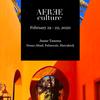Creative! Growth! at John Michael Kohler Arts Center
- SHEBOYGAN, Wisconsin
- /
- May 02, 2022
The first exhibition to present the history of the influential Creative Growth Art Center in Oakland, California, will be on view at the John Michael Kohler Arts Center from May 21, 2022 through May 21, 2023. Creative! Growth! will survey the work of eight key artists and others affiliated with Creative Growth, the preeminent center for artists with disabilities in the United States.
Considering the organization’s history and legacy through the lens of the present, Creative! Growth! will focus on work by artists who were—or remain—affiliated with Creative Growth, including Dwight Mackintosh, John Martin, Dan Miller, Tony Pedemonte, Judith Scott, William Scott, Nicole Storm, and Monica Valentine. Photographer and documentary filmmaker Cheryl Dunn will present a selection from her more than 20 years of documenting the artists at Creative Growth, including footage of their annual fashion show. Creative! Growth! is curated by Matthew Higgs, director and chief curator of White Columns in New York.
“Creative Growth is perhaps the most visionary arts organization I have ever encountered,” said Matthew Higgs. “Its grassroots approach to encouraging and supporting the creative process forcefully reminds us of the real potential for art, at a local, national, and international level.”
Exhibition Highlights
Rendered in distinctive, kinetic line work, Dwight Mackintosh’s subject matter reflects his experiences, through events and objects, from a lifetime of institutionalization. His drawings feature orderly lines of boys, sometimes with genitalia exposed; buses that are empty or full; and self-portraits of his own tonsillectomy. The work is characterized by repetitive flowing text and "x-ray" views of loosely drawn, yet tightly composed figures. The looping text is often illegible to the viewer, but it is so essential to Mackintosh’s expression that it is sometimes the only visual element on the page.
Dan Miller will be represented by a large scroll drawing. His artwork is composed of obsessive overlays of words and imagery that often build to the point of abstraction. Each work contains a written record of Miller’s interests in hardware stores, light bulbs, electrical sockets, and familiar people; however, only a few words are identified in its final stage. Largely unable to speak, Miller was taught at an early age to write words and numbers in order to communicate. This became the primary influence on his artistic practice, transforming text into graphic elements and employing an abstracted visual language as a tool of inquiry and expression.
John Martin creates drawings, ceramics, and woodwork that synthesize his memories of a family farm in Mississippi with his modern life in Oakland. Martin commonly depicts images of trucks, snakes, pocket knives, cell phones, and other items from his collection of found objects, which have informed his oeuvre since he joined Creative Growth’s studio. His interpretations both describe their function and subvert practicality through his outrageous animal mash-ups, oversized Leatherman tools, and mysterious text. Fish become knives, alligators become saws, Martin himself becomes a Nokia phone, a multi-tool is splayed open to reveal a grinning shark. His wry sense of humor is evident in all of his compositions, translating utilitarian imagery into a graphic and animated aesthetic. Creative! Growth! will feature an installation of about fifty of his ceramic tools.
Both Tony Pedemonte and Judith Scott work in abstraction – wrapping multi-colored yarn around objects and forms to create sculptures. Scott, who was blind and deaf, was drawn to forms that echoed the body, or adhered to the initial’s object original shape. Her wrapped sculptures, abstract in shape, were sourced from hand-built armatures made of discarded or found materials, often concealing an inner structure or cache of items. Her practice was marked by her independence, self-direction, and for never repeating a form or color scheme in her multimedia textile sculptures. Pedemonte, who is working at Creative Growth today, likens his constructions to sea creatures, reminding him of past family fishing trips. He works with high energy and intention, following his intuition and rarely pausing to consider his next move. Pedemonte begins by constructing armatures of wood and reclaimed materials that become nearly concealed with layers of yarn and thread. His sculptures are distinguished by their smooth texture, limited palette, and geometrically driven configurations that simultaneously conceal the work’s interior and offer intimate views through complex webs left open in its fibrous layers.
William Scott’s fundamental interest lies in reimagining public and private life as a more peaceful and positive existence. On view will be a selection of his earlier paintings in which he begins to develop his utopic visions of ‘Praise Frisco’ and its inhabitants. These will be shown alongside a hand painted suit, which he wore to his recent exhibition opening at Studio Voltaire in London, and is the primary subject of one of Cheryl Dunn’s films to be shown in the gallery.
Nicole Storm works through performance, drawing and sculpture to create dense compositions that include her “notes,” often awash in vibrant hues. She moves seamlessly between mark making with paint markers to painting with a brush, working and reworking the surface until she feels it is finished. This exhibition will feature some of her newest work in the form of large, painted panels.
Monica Valentine’s primary practice takes the form of optically charged sculptures composed of foam shapes that are densely covered with beads and sequins. Valentine is blind and wears prosthetic eyes, having lost her sight at birth. Working with great dexterity, Valentine threads sequins and beads onto thin pins, then uses her hands to feel along the foam form to find their placement. The process is rhythmic and calculated. Valentine’s exacting standards of bead size and color, foam shape and material, result in forms that are whole and perfect in their being. Visually rich and luminous, her sculptures are either monochromatic (red is her favorite color), or blooming with multiple hues across the visual plane as Valentine creates layers by juxtaposing the colors of sequins and beads.
ABOUT CREATIVE GROWTH
Founded in 1974 by artist Florence Ludins-Katz (1912–1990) and her psychologist husband Elias Katz (1913–2008), Creative Growth emerged from the larger social, cultural, and political narratives associated with the Bay Area in the late 1960s and early 1970s—including the women’s, gay, and civil rights movements. The arts and disabilities movement, which championed the civil rights of people with disabilities and fought against their marginalization in arts and culture, flourished during this era. The Katzes were among that movement’s most farsighted and committed advocates.
Now approaching its fiftieth anniversary, Creative Growth is the preeminent center for artists with disabilities in the United States, and has, become a model for similar centers nationally and internationally. At Creative Growth, the Katzes established a unique and fiercely independent environment where individuals with disabilities are empowered to explore their creativity at their own pace.
The staff at Creative Growth, almost exclusively practicing artists, are not teachers in any conventional sense, as no formal instruction takes place. Rather, the staff members work alongside the artists with disabilities, introducing them to new materials and processes, offering practical and technical assistance where necessary, and supporting their idiosyncratic approaches to self-expression.
ABOUT THE ARTISTS
Dwight Mackintosh (1906–1999) began making artwork late in life, after spending over fifty-five years in institutions; he was interned at age sixteen. Upon his release at age seventy-two, Mackintosh came to Creative Growth in Oakland. Mackintosh practiced in the Creative Growth’s studio until his death in 1999. Mackintosh's work has been exhibited internationally, including a retrospective exhibition at the Collection de l’Art Brut in Lausanne; Fraenkel Gallery and Rena Bransten Gallery, San Francisco; Gavin Brown’s enterprise, New York; and the Berkeley Art Museum. His work is part of the permanent collection of the Studio Museum in Harlem, the American Folk Art Museum, New York; the Trinkhall, Belgium, and the Collection de l’Art Brut, Lausanne.
John Martin was born in Marks, Mississippi, in 1963, and has been working at Creative Growth since 1987. In 2014, Martin was invited to create a site-specific installation as part of Facebook’s inaugural Artist-in-Residence program at the Frank Gehry-designed campus in Palo Alto, California.
Dan Miller was born in 1961 in Castro Valley, California, and has been affiliated with Creative Growth since 1992. Miller has had solo exhibitions at White Columns, Andrew Edlin Gallery, and Ricco/Maresca Gallery in New York; Galerie Christian Berst in Paris; and Diane Rosenstein Gallery in Los Angeles. His work was selected for the Venice Biennale in 2017 and has been included in exhibitions at the Museum of Modern Art, New York; Smithsonian American Art Museum, Washington, DC; and Berkeley Art Museum, among others. Miller’s work is included in the permanent collections of the Smithsonian American Art Museum, Museum of Modern Art, Centre Pompidou, Paris, American Folk Art Museum, New York; Berkeley Art Museum, Trinkhall Museum, and the Collection de l’Art Brut, Lausanne.
The earliest work of Tony Pedemonte (b. 1954) consists of abstract drawings that begin with a figure and become obscured with energetic mark making and sweeping gestures that reach beyond the paper’s edge. Eventually, Pedemonte began to incorporate materials within his immediate surroundings into his works on paper, including yarn and wood scraps. It was such tendencies that led to the eventual shift to the creation of three-dimensional sculptures, for which he is known. Pedemonte’s energetic practice is akin to an athletic or performative feat—his process and aesthetic are grounded by the use of his body as a tool for expression. Pedemonte is a recipient of the 2021 Wynn Newhouse Award.
Judith Scott (1943–2005) was a visual artist, isolated from outside influence due to Down syndrome, deafness, and decades of institutionalization. She created fiber sculptures during her tenure in Creative Growth’s studio from 1987 until her death. Born in Ohio with her fraternal twin sister Joyce in 1943, Scott was institutionalized at the age of seven at the Columbus State School. She remained in state institutions until 1985, when her sister became her legal guardian and brought her to California. Scott entered the Creative Growth Studio, initially displaying little artistic interest until a visiting artist workshop with the sculptor Sylvia Seventy, during which Scott discovered the medium of fiber art. Scott’s work has been exhibited at the Brooklyn Museum in New York in a retrospective exhibition and is part of the permanent collection at the Museum of Modern Art in New York, the Centre Pompidou in Paris, and the Smithsonian American Art Museum in Washington DC, among many others. Her work has also been shown at Gugging, Austria; the Museum of Everything, London; the Smithsonian American Art Museum Washington, DC; White Columns, Barbara Gladstone Gallery, Gavin Brown’s enterprise, Ricco/Maresca, New York; and Rena Bransten Gallery, San Francisco.
William Scott was born in 1964 and started working at Creative Growth in 1992. He is a highly skilled self-taught painter and social theorist who creates utopian visions of the past, present, and future. This manifests in his paintings in several genres; self-portraits, architectural renderings, portraits of pop culture icons, and imaginings of a peace-loving future.
Scott has had solo exhibitions at White Columns and Ortuzar Projects in New York. His work has been included in group exhibitions at the Hayward Gallery and the Museum of Everything, London; BAMPFA, Berkeley; Gavin Brown’s enterprise and Ricco/Maresca, New York; and Gallery Paule Anglim, Minnesota Street Project, and Rena Bransten Gallery, San Francisco. Scott’s work is included in the permanent collections of the Museum of Modern Art in New York, Trinkhall Museum in Belgium, the Studio Museum in Harlem, the Oakland Museum of California, and the San Francisco Museum of Modern Art.
Nicole Storm has been working at Creative Growth for 27 years and has recently expanded her practice to include immersive site-specific installations. For Storm, the process of creation is paramount to the final painting. Storm doesn’t simply sit or stand while working—she walks the building, rides the elevator, and hides in corners, carrying her work around as she adds layers and detail to her paintings. This is a key component of her process, and its ambulatory nature functions as a way for her to gather and harvest visual information and work through her ideas. Although Storm is not performing for anyone, watching her work is akin to watching a contemporary performance piece; she hums, takes breaks to dance, engages others in conversation, and then suddenly decides to move her artwork and clipboard to another location. The peripatetic nature of her process is the work itself, and what we have are the remains. As a natural progression of her creative process, Storm has begun directing the installation of her work for gallery exhibitions. Hanging work from the lighting grid, layering her paintings on the wall, spreading on the horizontal and vertical planes, and weaving everything together by painting on and around the works, her installations become active environments that continually evolve and become her new studio. Storm's most recent exhibition at White Columns in New York was proclaimed one of the best gallery shows of 2021 by Roberta Smith in The New York Times.
Monica Valentine was born in 1965 in San Mateo, California, and has been working at Creative Growth since 2012. Color dominates and informs much of Valentine’s life, and her ability to feel the color of an object by its temperature (a form of synesthesia) is just one way that she uses color to orient and empower herself in her environment.
ABOUT THE JOHN MICHAEL KOHLER ARTS CENTER
The John Michael Kohler Arts Center (JMKAC), located north of Milwaukee in Sheboygan, Wisconsin, is known for promoting the understanding and appreciation of the work of self-taught and contemporary artists through exhibitions and commissioned works of art. Founded in 1967, JMKAC has preserved, studied, and exhibited artist-built environments, earning a worldwide reputation. Art environments involve an individual significantly transforming their surroundings into an exceptional, multifaceted work of art.
The Arts Center’s downtown Sheboygan facility includes eight galleries, two performance spaces, a café, a museum shop, and a drop-in art-making studio. Among its program offerings are community arts projects; artist residencies; presentations of dance, film, and music; a free weekly summer concert series; classes and workshops; an onsite arts-based preschool program; and approximately twelve original exhibitions of the work of self-taught and contemporary artists annually. JMKAC also administers the renowned Arts/Industry residency program, which is hosted by Kohler Co.
ABOUT THE ART PRESERVE
In 2021, the John Michael Kohler Arts Center opened the Art Preserve, the world’s first museum to focus entirely on work from art environments. Located three miles from JMKAC, the 56,000-sq.-ft., three-level building holds more than 25,000 works in the Arts Center’s world-renowned collection, which includes complete and partial environments by more than 30 vernacular, self-taught, and academically-trained artists. Visitors experience unprecedented access and insight into the display, preservation, conservation, and interpretation of the Arts Center’s premier collection through tableaux as well as a unique system of curated, visible storage of the works of art.





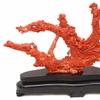


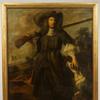

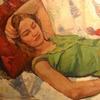
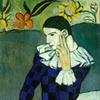
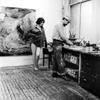
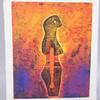
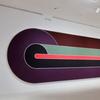
100x100_c.jpg)
